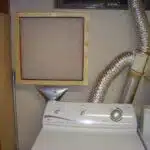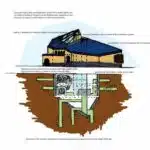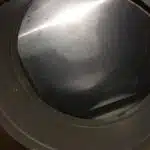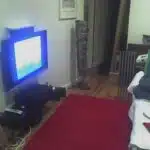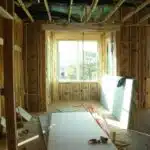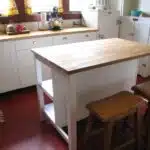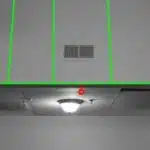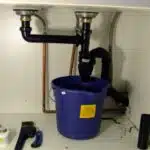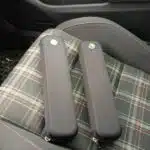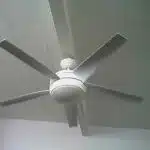As a range hood installation expert, I have worked with countless homeowners who were unsure of how to properly install their range hood. A range hood is an essential appliance in any kitchen as it helps keep the air clean by removing smoke, steam and cooking odors. However, the installation process can be intimidating for those without experience. In this article, I will guide you through the steps required to install a range hood and provide tips on how to make the process easier and more efficient.
Before starting the installation process, it is important to note that every kitchen is unique and may require different tools or materials depending on the layout of your space. It is also crucial to ensure that your range hood meets local building codes and guidelines. Installing a range hood may seem daunting at first, but with patience and attention to detail, even those with little experience can successfully complete this task. By following my step-by-step guide, you can confidently install your own range hood and enjoy all its benefits for years to come.
Assessing Your Kitchen Layout
Before installing a range hood, it is crucial to assess your kitchen layout. This includes evaluating the size and design of your kitchen as well as assessing ventilation. The first step in assessing ventilation involves checking the existing ductwork. If you have an older home, there may be no ductwork in place, which means that you will need to install one.
Next, consider the size and design of your kitchen. The size of your kitchen will determine the type and size of range hood needed to properly ventilate the space. A rule of thumb is that the range hood should be at least as wide as the cooktop or stove below it. Additionally, if you have a large open-concept kitchen with high ceilings, you may need a more powerful range hood than in a smaller enclosed space.
Finally, take into account the overall design aesthetic of your kitchen when selecting a range hood style. There are many options available including under-cabinet hoods, wall-mounted hoods, island hoods and downdraft hoods. Choosing the right style can not only improve functionality but can also enhance the visual appeal of your kitchen. In the next section, we will discuss how to choose the right range hood for your needs based on these factors and more.
Choosing The Right Range Hood
When it comes to choosing the right range hood for your kitchen, there are several factors to consider. One of the most important considerations is the style of the range hood. There are several styles available on the market today, including wall-mounted, island-mounted, under-cabinet mounted, and downdraft models. Each style has its own advantages and disadvantages, so it’s important to choose one that meets your specific needs and preferences.
Another important consideration when choosing a range hood is your budget. Range hoods can vary widely in price depending on their features, size, and style. Before making a purchase, it’s important to determine how much you’re willing to spend and what features are essential versus what features you can live without.
Overall, choosing the right range hood for your kitchen involves careful consideration of both style and budget considerations. By taking the time to research different models and compare prices and features, you can find a range hood that will meet all of your needs while staying within your budget.
As you move forward with selecting a range hood for your kitchen, it’s important to gather all of the necessary tools and materials before beginning installation. From measuring tape to power tools, having everything you need on hand will help ensure a smooth installation process that results in a properly functioning range hood.
Gathering The Necessary Tools & Materials
To ensure a smooth and efficient range hood installation, it is essential to gather all the necessary tools and materials beforehand. This will save you time and avoid unnecessary delays. To help you out, here’s a comprehensive tools checklist that you can use as a guide:
- Drill
- Measuring tape
- Screwdriver set
- Pliers
- Duct tape
- Wire cutter and stripper
- Level
Additionally, you will need to select the right material for your range hood installation. The most commonly used materials are stainless steel, copper, zinc, and aluminum. Each of these materials has its pros and cons in terms of durability, cost-effectiveness, and ease of maintenance. Stainless steel is the most popular choice due to its sleek appearance and easy upkeep.
While there are different material options available for range hood installations, it’s important to choose one that fits your budget and preferences. Don’t hesitate to consult with an expert or do some research before making a final decision.
Now that you have gathered all the necessary tools and materials for your range hood installation project let’s move on to preparing the area for installation by following these simple steps…
Preparing The Area For Installation
Measuring space is the first step to preparing the area for range hood installation. Before starting, take measurements of the space where you plan to install the hood. This will help ensure that you choose a hood that fits well and functions effectively in your kitchen. Keep in mind that the hood should be installed at least 18-30 inches above your cooktop or stove to provide adequate ventilation.
Clearing the area is also essential before installation. Remove all items from the surrounding area, including small appliances, utensils, and other kitchen tools. You should also clear any grease or debris that has accumulated on or around your range top. This will not only make it easier to work during installation but also prevent fire hazards.
Once you have taken measurements and cleared the area, you can proceed with turning off power & removing old hood. Your next step would be to turn off power from the electrical panel box before disconnecting your old range hood. Afterward, carefully remove your old hood by loosening screws and brackets holding it in place. With these steps complete, you are now ready to move on to installing your new range hood!
Turning Off Power & Removing Old Hood
After ensuring that the area is ready for installation, it’s time to turn off the power and remove the old hood. Did you know that according to the National Fire Protection Association, cooking equipment was involved in 49% of home fires reported between 2014-2018? This is why it is important to take power safety seriously when installing a range hood.
To begin, locate the circuit breaker or fuse box and turn off power to the kitchen. Next, use a screwdriver to remove any screws or bolts securing the old hood in place. It’s important to have someone assist you during this step as range hoods can be heavy and difficult to handle alone. Once all screws are removed, carefully lift the hood off of its mounting bracket and unplug any electrical connections.
Remember to exercise caution during this process as it involves electrical wiring and sharp objects. Wear work gloves and safety goggles if necessary. With the old hood safely removed, it’s now time to move on to measuring and marking the mounting location for your new range hood.
Measuring & Marking The Mounting Location
- Accurately measuring and marking the mounting location of the range hood is essential for a successful installation.
- A wall layout should be used to assess the stud location and ventilation requirements.
- An exhaust vent should be located at the rear of the range hood and its position should be marked with a template.
- A pencil, level, and tape measure should be used to mark the location of the range hood.
- A drill and appropriate screws or wall anchors should be used to mount the range hood.
- Finally, the range hood should be securely fastened to ensure it is properly installed.
Measuring
The proper installation of a range hood requires accurate measuring. One of the critical measurements to consider is the proper height of the range hood. The ideal height for the range hood is between 24 and 30 inches above the cooking surface. This measurement ensures that the smoke and steam are efficiently captured while cooking, preventing it from spreading throughout your kitchen.
Another crucial measurement to consider when installing a range hood is the accurate width. The width of your range hood should be equal or exceed the size of your cooktop or stove. A range hood that is too narrow will not capture all the smoke and steam effectively, while one that is too wide may look awkward in your kitchen space.
It’s essential to take these measurements precisely before mounting your range hood as it will save you time, money, and energy in the long run. Taking these precautions ensures that your range hood functions correctly and keeps you and your family safe while cooking in your kitchen space.
Marking
As a range hood installation expert, measuring accuracy is one of the critical aspects to ensure a successful installation. However, measuring alone is not enough. Marking the mounting location accurately is also necessary to avoid common mistakes during the installation process. The marking process involves using a level and a pencil to mark where the screws will go on your wall or cabinet.
One common mistake when marking the mounting location is not accounting for any obstacles in the way of your range hood’s ductwork. Before marking, check for any pipes or wires that may obstruct your range hood’s ventilation system. Another mistake is failing to account for the thickness of your range hood’s rear panel when marking. Failing to do so can result in an off-centered installation that may not function efficiently.
Once you have taken accurate measurements and marked the mounting location correctly, it’s time to mount your range hood. Keep in mind that improper mounting can lead to accidents or ineffective ventilation systems. Therefore, it’s essential to follow manufacturer instructions carefully and use appropriate hardware for your specific range hood type and weight. By doing so, you can ensure proper installation and enjoy safe and efficient cooking experiences in your kitchen space.
Mounting Location
As a range hood installation expert, measuring and marking the mounting location are crucial to ensure a successful installation. However, it is equally important to choose the right height and optimal location for your range hood. Choosing the right height involves considering the height of your cooktop or range and ensuring that your range hood is at least 24 inches above it. This distance ensures that your range hood can capture smoke, steam, and grease effectively.
Additionally, when selecting an optimal location for your range hood, consider the layout of your kitchen space. The ideal location is where the range hood can remove smoke and steam efficiently without obstructing movement in your kitchen. Furthermore, it should be far enough from any potential obstructions such as cabinets or shelves to avoid any accidental damages.
Once you have determined the ideal height and location for your range hood, you can proceed with marking and mounting it appropriately. Keep in mind that improper mounting can lead to accidents or ineffective ventilation systems. Therefore, it’s essential to follow manufacturer instructions carefully and use appropriate hardware for your specific range hood type and weight. By doing so, you can ensure proper installation and enjoy safe and efficient cooking experiences in your kitchen space while serving others with delicious meals without worrying about air quality issues.
Installing The Brackets & Support
Once you have determined the ideal location for your range hood, it is time to install the brackets and support. Proper bracket installation is critical because it will ensure that your range hood is secure and level. First, identify the mounting height of your range hood. The standard mounting height for a range hood is between 24 and 30 inches above the cooktop surface. Be sure to check the manufacturer’s instructions before beginning.
Next, locate the ceiling joists or wall studs where you will mount the brackets. Use a stud finder to locate them accurately. Once you have found them, mark their location on the wall or ceiling with a pencil. It is important to ensure that the brackets are correctly spaced apart according to the weight capacity of your range hood.
After marking out where you will attach each bracket, drill pilot holes into each stud or joist at those locations. Then, secure each bracket in place using screws provided by your manufacturer. Double-check that each bracket is level as you go along to avoid any issues later on when mounting your range hood.
- Make sure there is enough space between the top of your cooktop and bottom of your hood.
- Choose a sturdy material for your brackets and support structure.
- Always follow manufacturer instructions regarding spacing and weight capacity when installing brackets.
- Check that all screws are tight and secure before proceeding with further installation steps.
With proper bracket installation complete, you are now ready to move on to mounting your range hood onto these supports.
Mounting The Range Hood
Mounting the range hood is a critical step in the installation process, and it’s important to do it correctly to ensure proper ventilation. Like fitting a puzzle piece into its designated spot, mounting the range hood requires precision and attention to detail. It’s like aiming for the bullseye in darts; you need to hit the mark perfectly.
To start, secure screws are typically used to attach the range hood to the underside of your cabinetry. It’s essential to use the correct type of screw and appropriate length to avoid damaging your cabinetry or leaving gaps between them. Additionally, some range hoods come with additional alignment techniques that make mounting easier and quicker. Take advantage of these features when available.
Ventilation options must be considered when mounting your range hood, such as ducted or non-ducted ventilation systems. Ductwork considerations are also necessary if a ducted system is selected. You will need to determine if an existing ductwork can be used or if new ductwork needs installation. Taking care of these details during installation will prevent future issues with airflow and maintain optimal ventilation within your kitchen.
When mounting your range hood, remember that accuracy is key; take time with securing screws and aligning surfaces precisely. Ventilation options and ductwork considerations must not be overlooked since they play crucial roles in keeping your kitchen free from smoke, steam, and cooking odors. The next section will cover how connecting the ductwork is done after mounting the range hood properly.
Connecting The Ductwork
Accurately measuring ductwork is a critical step in the installation of a range hood. A variety of tools can be used to measure the size and shape of ductwork, including measuring tape, a protractor, and a straight edge. When cutting ductwork, use a tin snips and mark cutting lines with a marker or pencil. It is important to make sure the cuts are straight and the edges are filed smooth to ensure proper installation.
Measuring Ductwork
Accurately measuring ductwork is crucial for successful range hood installation. Before you begin, ensure that you have the correct dimensions of your ductwork. You will need to measure the diameter of the ductwork and its length to determine compatibility with your chosen range hood. It is essential to take accurate measurements as even minor discrepancies can lead to improper fittings and airflow issues.
When measuring your ductwork, use a tape measure or ruler to get precise measurements. Measure the diameter across the opening of the ductwork and record this measurement in inches. Next, measure the length of your ductwork from one end to another by running a tape measure along its entire length. This information will allow you to select a range hood with compatible ductwork size and shape.
It is important to note that if your current ductwork does not match your new range hood’s requirements, it may be necessary to modify or replace it. In such cases, it is best to consult an experienced installer who can recommend suitable options for replacement or modification. With proper attention paid to measuring accuracy and ductwork compatibility, you can confidently install a range hood that will efficiently vent cooking fumes out of your kitchen without any hassle!
Cutting Ductwork
After accurately measuring your ductwork, the next step in connecting it to your range hood is cutting the ductwork to fit. Before proceeding with this task, it is crucial to observe safety precautions and have the necessary tools on hand.
When cutting ductwork, ensure that you wear appropriate protective gear such as gloves and eye protection to prevent injuries. Use a metal-cutting blade or saw to make precise cuts on the ductwork while avoiding damage to surrounding surfaces. It is also essential to clean any debris or metal shavings from the work area after cutting for safety purposes.
The tools needed for cutting ductwork include tin snips, aviation snips, a hacksaw or reciprocating saw with a metal-cutting blade, and a drill with sheet metal screws. These tools will enable you to make precise cuts and secure fittings securely without damaging your range hood or surrounding surfaces. By following these guidelines and using appropriate tools, you can safely and effectively cut your ductwork to connect it with your range hood for optimal performance.
Wiring The Range Hood
After connecting the ductwork, it is time to move on to wiring the range hood. Electrical safety should always be a top priority when dealing with electrical wiring. Before starting any work, make sure that the power is turned off at the breaker box and that there is no electricity flowing to the wires that will be worked on. It is also important to wear protective gear such as gloves and safety glasses.
Once you have ensured electrical safety, it is time to start working on wire connections. Begin by removing the electrical cover plate from the range hood and locating the wires inside. The wires will need to be connected according to manufacturer instructions, which can typically be found in the installation manual or online. Make sure all wire connections are tight and secure before replacing the cover plate.
In addition to following manufacturer instructions for wire connections, it is important to adhere to local building codes and regulations. These codes may require specific types of wiring or grounding methods for safety purposes. Consult with a licensed electrician if you are unsure about any aspect of wiring your range hood.
- Ensuring electrical safety is crucial before starting any work
- Follow manufacturer instructions for wire connections
- Adhere to local building codes and regulations
Moving on from wiring your range hood, testing it ensures proper installation and functionality.
Testing The Range Hood
Having successfully installed your range hood, the next step in ensuring its proper functioning is testing it. This involves checking for any unusual range hood noise and replacing the range hood filter if necessary.
Firstly, turn on your range hood to check for any abnormal sounds. If you notice a loud or strange noise, this could be an indication of a mechanical issue that needs addressing. Check all connections and wiring to ensure everything is connected properly. If the noise persists, contact a professional for assistance.
Secondly, inspect the range hood filter to determine if it needs replacement. Range hoods have filters that trap grease and other particles from cooking fumes and smoke. Over time, these filters can become clogged with debris and lose their effectiveness. It’s recommended to replace these filters every six months or as indicated by the manufacturer’s recommendations.
In summary, testing your range hood after installation is crucial in ensuring its proper functionality. Check for any unusual noises and replace filters as needed to maintain optimal performance. The next step in securing your range hood involves properly mounting it in place.
Securing The Range Hood
After testing the range hood, it’s time to secure it in place. Anchoring methods vary depending on the type of range hood and the material of your kitchen walls. The most common anchoring method is using screws to attach the range hood to the upper cabinets or wall studs. However, some range hoods come with mounting brackets that require different anchoring methods. It’s important to carefully follow the manufacturer’s instructions for securing your specific range hood.
Another important aspect of installing a range hood is choosing the right ventilation option. There are two types of ventilation: ducted and ductless. Ducted ventilation requires a venting system that exhausts air outside through a duct, while ductless ventilation recirculates air back into the kitchen after filtering it through charcoal filters. Ducted venting is more effective at removing smoke, heat, and odors from your kitchen, but it requires additional installation steps and may not be possible in every kitchen layout.
Once you have secured your range hood and chosen your ventilation option, it’s time to clean up any debris from the installation process and add finishing touches. This includes removing any protective plastic or cardboard from your new appliance, wiping down surfaces with a damp cloth, and making sure all lights and fans are working properly. You can also consider adding decorative elements such as trim kits or custom paint to match your kitchen decor. With proper installation and maintenance, your new range hood will provide years of efficient ventilation for your cooking needs.
Moving on to cleaning up & finishing touches, it’s important to take care when handling any remaining materials from installation such as screws or brackets by disposing of them properly in accordance with local regulations. Additionally, you may want to consider adding a backsplash behind your range hood for added protection against grease stains or splatters while cooking. Finally, make sure you understand how to properly maintain your new range hood by regularly cleaning removable filters or replacing them as needed. With a little attention to detail, your range hood will not only provide functional benefits but also enhance the overall aesthetic of your kitchen.
Cleaning Up & Finishing Touches
Once the range hood is installed, it’s time to focus on cleaning up and adding finishing touches. One essential step is to ensure that all the electrical and ductwork connections are secure before you begin cleaning. Once you’ve done this, turn on the fan and let it run for a few minutes to make sure everything is working correctly.
When it comes to cleaning supplies, always read the manufacturer’s instructions carefully. Most range hoods are made of stainless steel, so you’ll want to avoid using abrasive cleaners or scouring pads that could scratch the surface. Instead, use a soft cloth or sponge with warm soapy water or a specialized stainless steel cleaner.
Finally, if you’re looking to add some decorative options to your range hood, consider purchasing additional accessories such as backsplashes or vent covers. These accessories can help enhance the aesthetic appeal of your kitchen while also improving the functionality of your range hood. When selecting decorative options, be sure to choose items that complement your existing décor and fit within your budget.
Moving forward into troubleshooting common issues, one important aspect of maintaining a range hood is regular cleaning. Over time, grease and debris can build up in the filters and ductwork, causing decreased efficiency and potentially dangerous situations such as fires. By regularly cleaning your range hood according to manufacturer guidelines, you can keep it functioning properly for years to come.
Troubleshooting Common Issues
After finishing the installation of your range hood, it’s important to clean up and add some finishing touches. First, make sure you’ve turned off the power supply to the hood by flipping the circuit breaker or unplugging it from the wall. Then, remove any protective film or stickers that may still be on the unit. Use a soft cloth and warm soapy water to wipe down both the inside and outside of the hood, being careful not to damage any electrical components.
Once you’ve cleaned up, it’s time to troubleshoot any common issues that may arise with your range hood. If you’re having trouble with electrical components such as lights or fan speed control, check to make sure all wires are properly connected and secure. Additionally, make sure your circuit breaker hasn’t tripped. For ventilation issues such as poor airflow or loud operation, inspect your ductwork for any blockages or leaks. Make sure all vents and filters are clean and free from debris.
Taking care of your range hood doesn’t stop after installation – regular maintenance is crucial in ensuring its longevity and optimal performance. One easy way to maintain your range hood is by regularly cleaning its filters. Depending on how often you cook, filters should be cleaned at least once every three months using warm soapy water or a non-abrasive cleaner. Additionally, inspect your ductwork for any damage or wear and tear annually, making necessary repairs as needed.
As you continue to use your new range hood, remember that proper care and maintenance will keep it functioning effectively for years to come. In the next section, we’ll cover more tips on how to maintain and care for your range hood.
Maintenance & Care For Your Range Hood
As important as it is to install a range hood properly, it’s equally crucial to maintain and care for it. Your range hood plays a vital role in keeping your kitchen free of smoke, grease, and odors. It’s only fair that you give back by keeping it clean and functional.
Cleaning filters is an essential aspect of maintaining your range hood. Filters trap grease particles and prevent them from recirculating into the air. Over time, these filters can become clogged with grease buildup, which reduces their efficiency. To clean them, remove them from the range hood and rinse them with hot soapy water or run them through the dishwasher if they’re dishwasher-safe.
Removing grease buildup is another necessary maintenance task for your range hood. Grease can accumulate on the fan blades, motor housing, and other parts over time. This buildup can cause your range hood to work harder than it needs to or even damage its components. Use a degreaser and a soft cloth or sponge to wipe down these areas regularly.
| Maintenance Task | Frequency | Time Required |
|---|---|---|
| Cleaning Filters | Monthly | 10-15 minutes |
| Removing Grease Buildup | Bi-Weekly | 20-30 minutes |
| Professional Inspection & Cleaning | Annually | 1 hour |
By following these simple maintenance tasks, you’ll ensure that your range hood continues to work efficiently for years to come. However, keep in mind that some tasks may require professional attention periodically. For example, annually inspecting and cleaning the internal components of your range hood is best left to professionals who have the expertise and tools required for this task. Remember that regular maintenance not only keeps your kitchen smelling fresh but also prolongs the life of your appliance.
Conclusion
In conclusion, installing a range hood may seem like an intimidating task, but with the right tools and knowledge, it can be a straightforward process. By assessing your kitchen layout and choosing the appropriate range hood, you can ensure that you have a properly functioning ventilation system that enhances your cooking experience.
Before beginning the installation process, make sure to gather all necessary tools and materials and prepare the area for installation. Follow proper safety precautions when turning off power and removing your old hood. Once secured in place, clean up any debris and add finishing touches. Troubleshoot common issues as they arise and maintain your range hood regularly to ensure its continued functionality.
As the saying goes, “a breath of fresh air” is essential in any kitchen space. Installing a range hood not only provides fresh air but also adds aesthetic value to your kitchen while protecting against harmful pollutants. By following these steps, you can install a range hood with confidence and enjoy all the benefits it has to offer.
Image Credits
- “Task Force Raider Tanks Light-Up The Ranges at Fort Hood, Texas” by The U.S. Army (featured)



